Abstract
Vaginal secretions from 508 women were examined for evidence of infection by Trichomonas vaginalis, and for antibodies directed against this organism; 42 women (8-3 per cent.) were found to be infected. Secretions from 29 of these women were assayed and antibody apparently directed against T. vaginalis was found in 22 (76 per cent.) of them. Eight out of nineteen secretions (42 per cent.) from apparently uninfected women also contained antibody. Amongst the infected women, no correlation could be found between the presence or absence of antibody and the degree of inflammation, duration of symptoms, use of oral contraceptives, or additional sexually-transmitted disease; there was, however, a slight suggestion that low parasite counts in the vaginal secretions were associated with the presence of antitrichomonal antibody.
Full text
PDF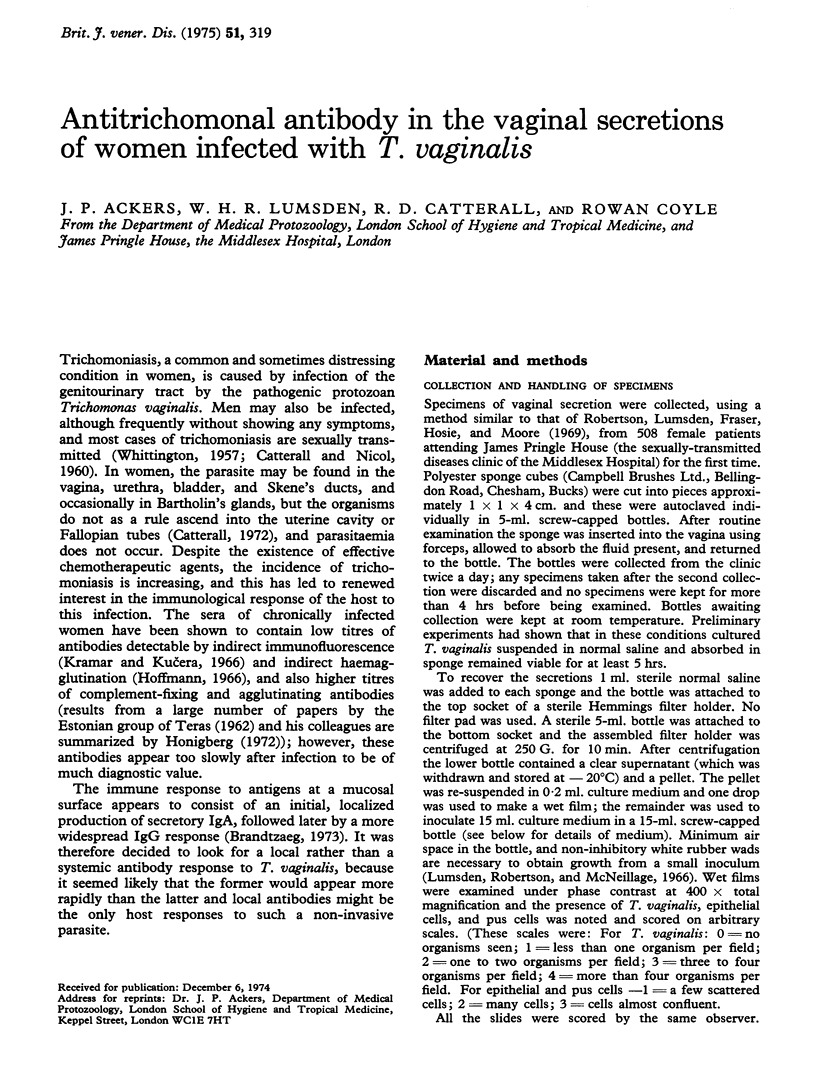
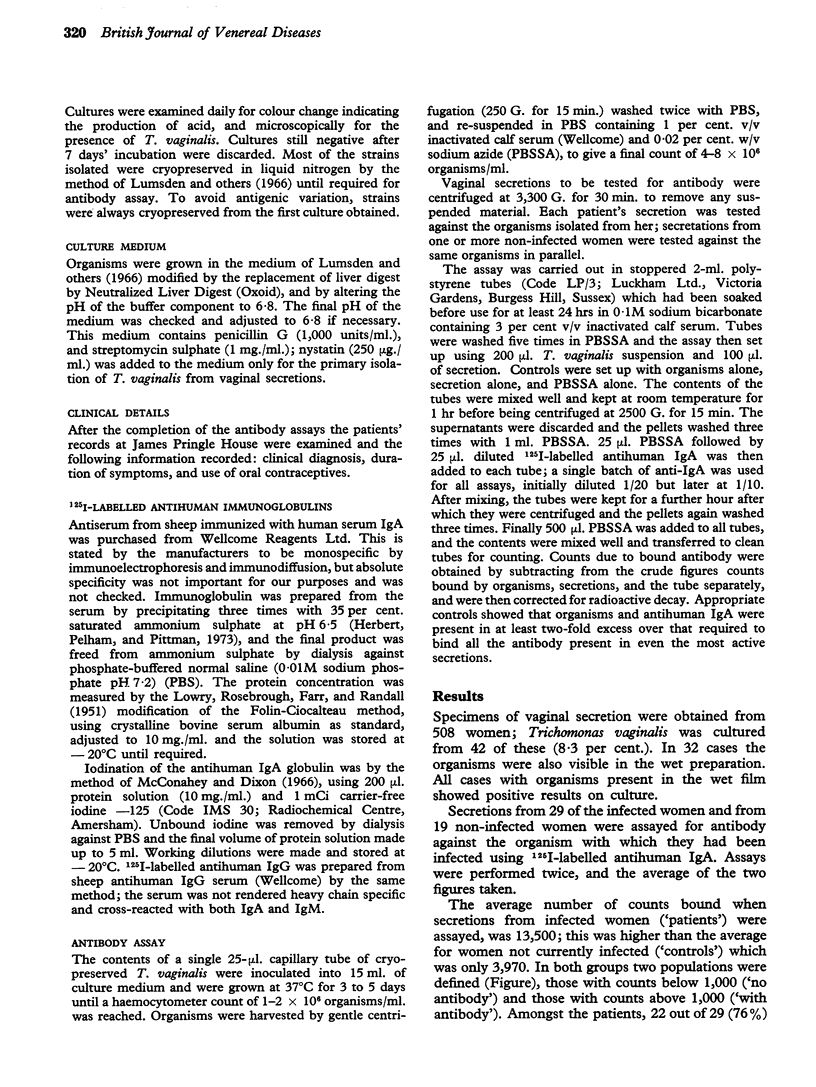
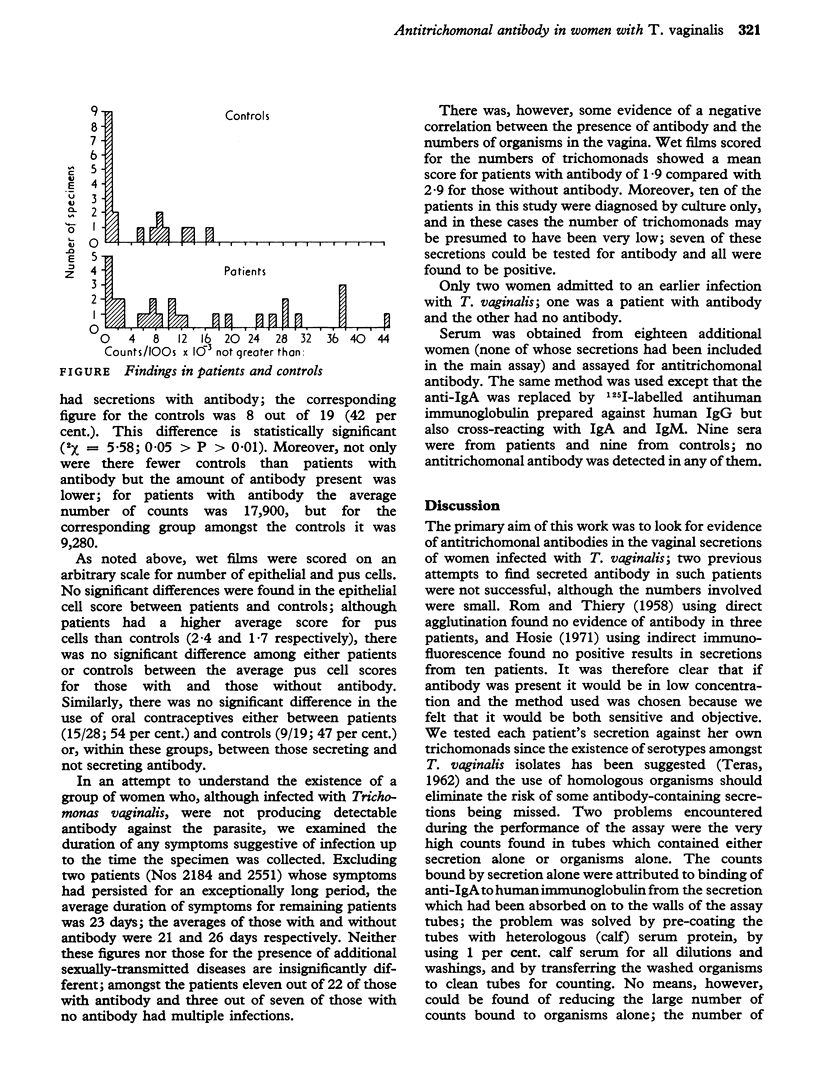
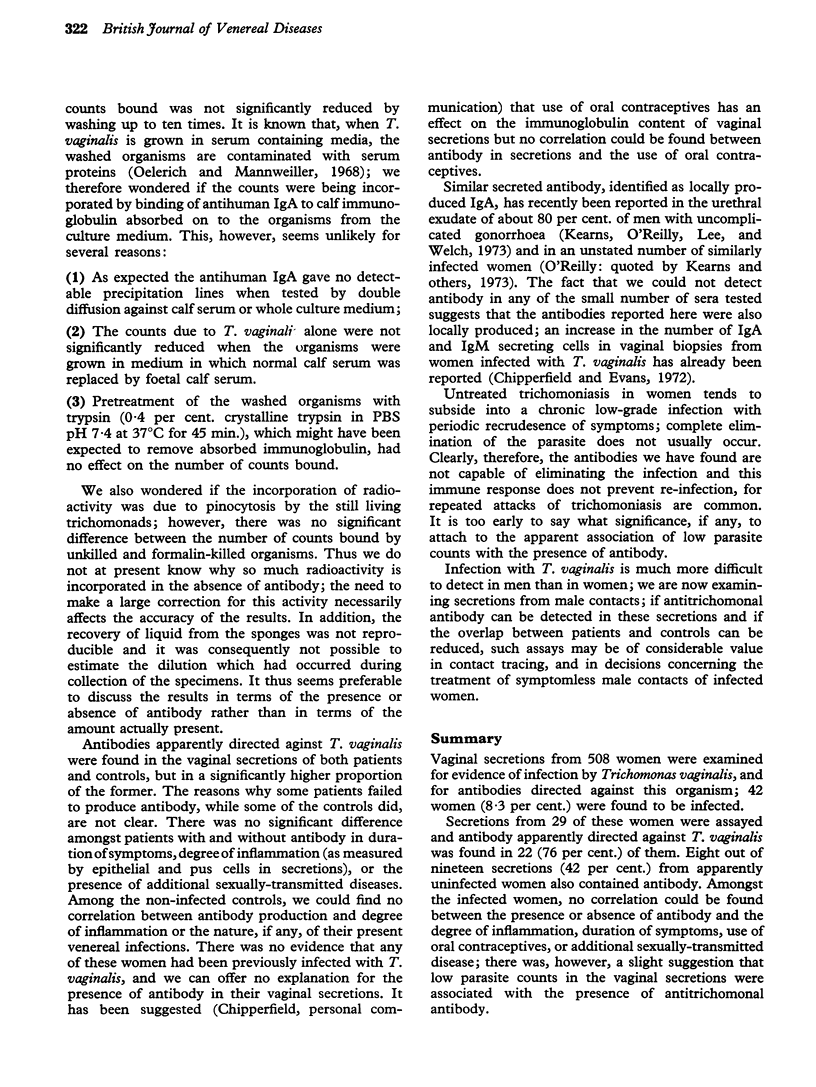
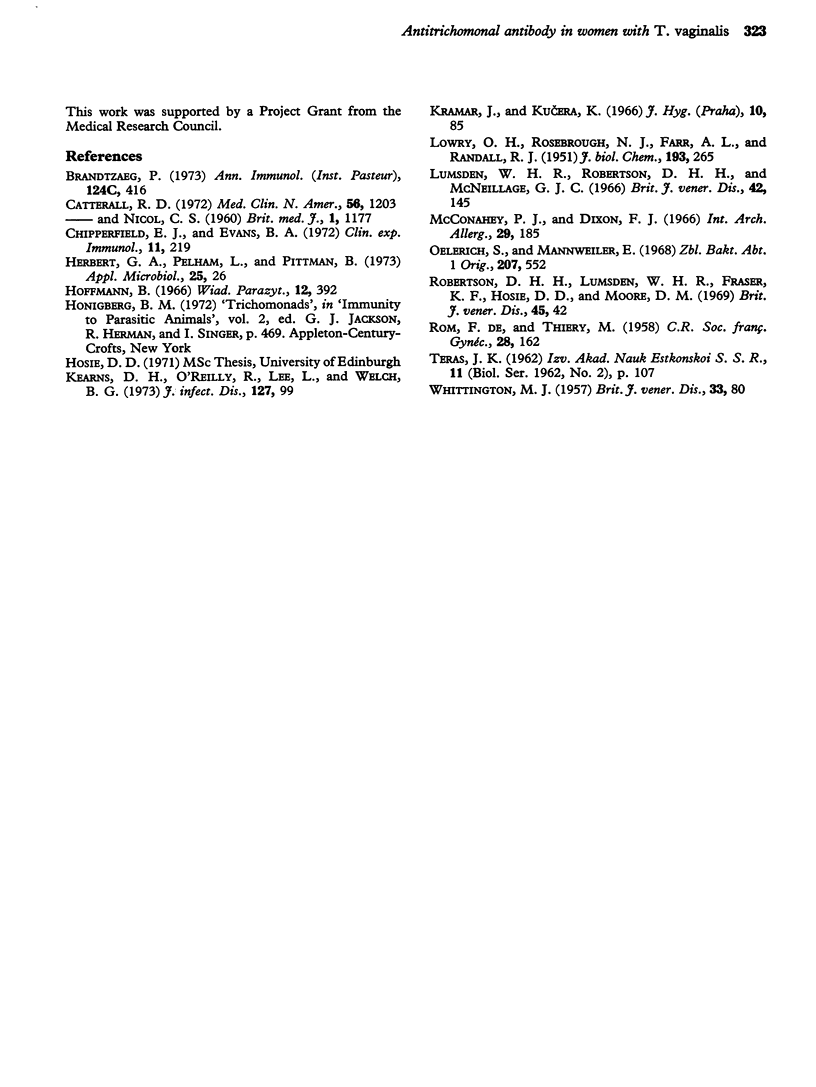
Selected References
These references are in PubMed. This may not be the complete list of references from this article.
- Catterall R. D. Trichomonal infections of the genital tract. Med Clin North Am. 1972 Sep;56(5):1203–1209. doi: 10.1016/s0025-7125(16)32345-8. [DOI] [PubMed] [Google Scholar]
- Chipperfield E. J., Evans B. A. The influence of local infection on immunoglobulin formation in the human endocervix. Clin Exp Immunol. 1972 Jun;11(2):219–233. [PMC free article] [PubMed] [Google Scholar]
- DE ROM F., THIERY M. Mise en évidence d'anticorps locaux dans la vaginite à trichomonas. C R Soc Fr Gyncol. 1958 Mar;28(3):162–163. [PubMed] [Google Scholar]
- Hebert G. A., Pelham P. L., Pittman B. Determination of the optimal ammonium sulfate concentration for the fractionation of rabbit, sheep, horse, and goat antisera. Appl Microbiol. 1973 Jan;25(1):26–36. doi: 10.1128/am.25.1.26-36.1973. [DOI] [PMC free article] [PubMed] [Google Scholar]
- Kearns D. H., O'Reilly R. J., Lee L., Welch B. G. Secretory IgA antibodies in the urethral exudate of men with uncomplicated urethritis due to Neisseria gonorrhoeae. J Infect Dis. 1973 Jan;127(1):99–101. doi: 10.1093/infdis/127.1.99. [DOI] [PubMed] [Google Scholar]
- Kramár J., Kucera K. Immunofluorescence demonstration of antibodies in urogenital trichomoniasis. J Hyg Epidemiol Microbiol Immunol. 1966;10(1):85–88. [PubMed] [Google Scholar]
- LOWRY O. H., ROSEBROUGH N. J., FARR A. L., RANDALL R. J. Protein measurement with the Folin phenol reagent. J Biol Chem. 1951 Nov;193(1):265–275. [PubMed] [Google Scholar]
- Lumsden W. H., Robertson D. H., McNeillage G. J. Isolation, cultivation, low temperature preservation, and infectivity titration of Trichomonas vaginalis. Br J Vener Dis. 1966 Sep;42(3):145–154. doi: 10.1136/sti.42.3.145. [DOI] [PMC free article] [PubMed] [Google Scholar]
- McConahey P. J., Dixon F. J. A method of trace iodination of proteins for immunologic studies. Int Arch Allergy Appl Immunol. 1966;29(2):185–189. doi: 10.1159/000229699. [DOI] [PubMed] [Google Scholar]
- Oelerich S., Mannweiler E. Uber den Einfluss des Nährmediums auf die antigenen Eigenschaften von Trichomonas vaginalis. II. Serumfreies Medium. Zentralbl Bakteriol Orig. 1968;207(4):552–559. [PubMed] [Google Scholar]
- Robertson D. H., Lumsden W. H., Fraser K. F., Hosie D. D., Moore D. M. Simultaneous isolation of Trichomonas vaginalis and collection of vaginal exudate. Br J Vener Dis. 1969 Mar;45(1):42–43. doi: 10.1136/sti.45.1.42. [DOI] [PMC free article] [PubMed] [Google Scholar]
- WHITTINGTON M. J. Epidemiology of infections with Trichomonas vaginalis in the light of improved diagnostic methods. Br J Vener Dis. 1957 Jun;33(2):80–91. doi: 10.1136/sti.33.2.80. [DOI] [PMC free article] [PubMed] [Google Scholar]


